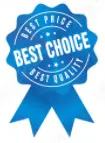Do you want to learn Japanese but don’t know where to begin?
Learning Japanese can be intimidating, especially if you don’t reside in Japan or don’t have any Japanese friends.
So Is possible to learn Japanese by yourself?
Yes, it is possible to learn Japanese yourself. Japanese can be self-taught, ideally through reading books and reputable courses. The good news, there are many online courses for self-teaching. Netflix and YouTube can help you enhance your listening comprehension.
So now I have answered the main question, let’s review some easy, affordable and proven ways to learn Japanese yourself and explore the main queries relating to self-learning Japanese.
What Is The Easiest Way To Teach Yourself Japanese?
If you want to study Japanese on your own as a beginner, the most straightforward approach is to enrol in online courses.
When learning something new, it’s wise to start with the basics. The foundation for learning Japanese is to master the Japanese alphabet, which is divided into Hiragana and Katakana.
So you probably wonder what Hiragana and Katakana are? Right?
Hiragana and Katakana form the basis of the Japanese phonetic alphabet (like English ABCD etc). It represents every sound in the Japanese language.
The primary distinction between Hiragana and Katakana is that Hiragana is used to represent Japanese words, whilst Katakana is used to represent foreign words. Because Japanese is a language with a lot of borrowed words, Katakana quickly tells the reader that the word is foreign.
If you are looking for a reputable beginner Japanese course look no further.
I want you to get the best deal for your money, so I put together this guide of the best Japanese online course going around.
1. Japanese for Beginners
Rating 4.8 Stars
Beginner Level
131,307 already enrolled

This course is perfect for those wanting to learn Japanese, you cannot go wrong with this course.
What I like about this course starts with learning the Japanese alphabet (Hiragana and Katakana). By the end of the course, you will have a grasp of basic Japanese grammar, pronunciation and writing.
This course is run by the prestigious Saint Petersburg State University
Course Features
1. To read simple texts in Japanese and write using the hiragana and katakana scripts as well as the kanji characters.
2. To understand basic vocabulary in speech and use it in everyday communicative situations.
3. To form their sentences using the provided grammar material.
The course provides extensive materials on Japanese grammar, phonetics, writing system and communication etiquette, as well as exercises for learners to apply the new knowledge.
The vocabulary of the course consists of more than 200 words.
Those who are interested in continuing their learning of the Japanese language can proceed to the second part of this course – Japanese for beginners 2.
Check out the reviews for this course, they are very positive
What The Reviews Are Saying?
The course was challenging but doable, I learned a lot and it equipped me with enough knowledge to further my Japanese language studies. It is the perfect Japanese language foundation beginners need.
Source: Coursera
Japanese Instructions was given and understandable. Reading and writing exercises were good too. Practice Quiz helped a lot in learning my mistakes over and over.
Source: Coursera
Honestly, I’m really glad that I decided to join this course. It’s really helpful~~ I hope I could join the next course in the near future so I could improve my Japanese skill
Source: Coursera
2. Japanese for Beginners 2
Rating 4.8 Stars
Beginner Level
15,277 already enrolled
Upon completion of this course, the learners will be able:
1. To read texts in Japanese and write using the hiragana and katakana scripts as well as the kanji characters.
2. To understand basic vocabulary in speech and use it in everyday communicative situations (shopping, travelling, visiting friends, phone conversations etc).
3. To form their sentences using the provided grammar material.
This course introduces a lot of new grammar constructions, useful vocabulary and conversational phrases to the learners, who already completed Japanese for beginners 1.
Five units of this course aim to enrich learners oral and written speech and help in acquiring fluency in Japanese.
What The Reviews Are Saying?
It was really a great course and a super source of learning new learning. Especially the teaching methodology and unique style helped me a lot!
Source: Coursera
Good materials, packed with information, so there’s a lot to read and learn. The regular comprehension tests were valuable. Make sure you have printer access for the coursework materials and take time to learn the characters by writing them down and testing your memory. Overall, very good beginners course for the motivated learner.
Source: Coursera
Do Japanese Use Katakana Or Hiragana?
Yes, Japanese you both Katakana and Hiragana. Japanese words and expressions are written in Hiragana, while foreign words and expressions are written in Katakana. The usage of Katakana for slang has also become popular in comics. In other words, if the Japanese are proper, use Hiragana; if not, use katakana. When it comes to Kanji, things get a little more tricky.
What’s The Difference Between Hiragana, Katakana And Kanji?
Hiragana is the main alphabet, Katakana the alphabet that includes foreign words and Kanji which was originally Chinese, Japanese adapted it into their language. Have multiple meanings and in most cases multiple readings
- Hiragana ひらがな – Japanese main alphabet. Characters have no meaning and have only one phonetic reading. (Except for は, which has 2). Considered feminine from its curved appearance.
- Katakana カタカナ – Japanese alphabet for foreign words and/or emphasis. Characters have no meaning and have only one phonetic reading. Considered masculine from its ridged appearance. (Pain in the ass to read) . Most characters look alike e.g. ツシソンノ
- Kanji 漢字 – Originally Chinese, Japanese adapted it into their language. Have multiple meanings and in most cases multiple readings. e.g. 上 and 下 both have about 8 different ways to be read.
Which Is Easier Hiragana Or Kanji?
Hiragana is quite simple to understand because it makes up the vast majority of Japanese you will read. Katakana is also simple to read, but understanding the meaning can be difficult if you don’t speak the word it’s trying to imitate aloud.
Final Thoughts
Yes, you can learn Japanese by yourself. Hiragana, Katakana, and Kanji are all possible to learn. Online classes are a great way to learn. Netflix and YouTube can help you enhance your listening comprehension.
Related Articles
Affiliate Disclaimer
Workveteran is reader-supported. This post may contain Affiliate Links, meaning we may earn an affiliate commission if you decide to purchase through a link, at no cost to you.


